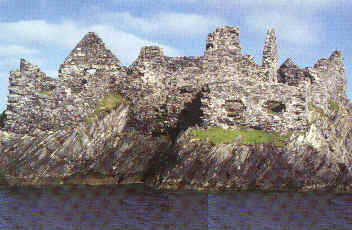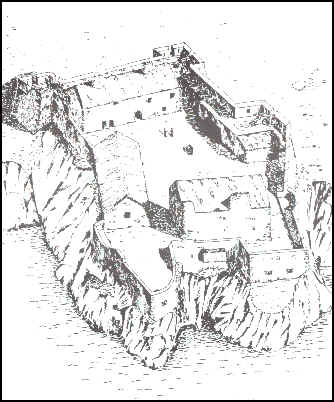
CROMWELL'S BARRACKS

As stated earlier the O'Malley clan in the 16th century were reputed to have had a castle on Dún Gráinne. Don Bosco, a supposed ally of Gráinne Uaile, was said to have had a castle opposite Dún Gráinne where the ruins of Cromwell's Barracks now stand. Together they prevented unwanted intruders from entering the surrounding waters, or they used the natural harbour as a trap to attack and loot those ships with valuable cargo on board. They succeeded by stretching a chain boom across the harbour entrance from the castle at the harbour to Scealp na gCát at the opposite end.
 |
The cromwellian regime built the imposing and well preserved star shaped fort at the same site about 1656. In the years following construction the barracks was used to house captured Catholic clergy from all over the country after the English Statute of 1655 declared them guilty of high treason. Here they awaited transportation to the West Indies and other remote places. After the restoration of Charles II to the throne in 1660 the barracks was used mainly as part of a defensive strategy. During the Jacobite War it was used when the Irish Forces held out until after the Battle of Aughrim in 1691, when they surrendered to the Williamite Forces. Their interest in these islands was simply to cast an eye over French pirates that trolled up and down the west coast and who often took refuge in such natural harbours as the one located at Inishbofin. To the east of Cromwell's Barracks is an impressive crescent-shaped medieval harbour. This must have played a major part in allowing ships in and out during the Cromwellian and Jacobite Wars. It is now almost totally silted up but it is still visible at spring tides. |